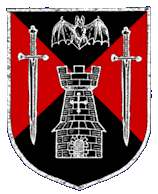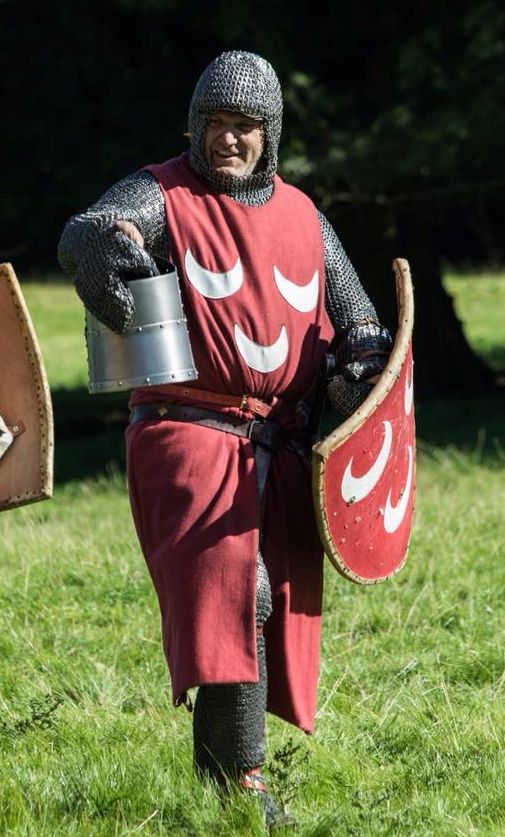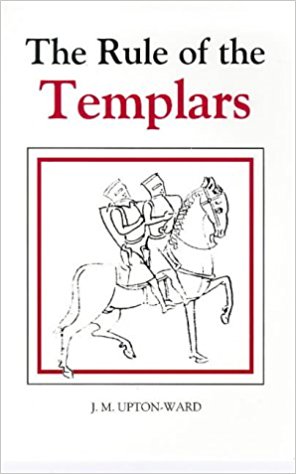Link to the other pages:
-
Knight Templar
The current project is to depict a 12th century or late 13th century knight Templar (or both).
Under construction.
Note: Some of these sources are from Wikipedia, that is not usually regarded as reliable. The sources herein that come from Wikipedia must therefore be treated with care and the interested reader advised to look further. In time, all of the Wikipedia data will be replaced by primary sources.
My pinterest folder related to Templars, in particular re-enactors can be found here. It is very difficult to find reliable illustrations of Templars on Pinterest. It looks like the legend and the aura that surround Templars has attracted a lot of historically inaccurate "historical interpreters" with little actual knowledge of the order and with varying degree of kit quality. A simple search for the "Templar" keyword on Pinterest or Google Images will immediately illustrate my point.
My thanks go to Brother Ranulf who's provided a lot of information and lines of research on this topic.
The coat of arms on my shield must be historically as accurate as possible but this is far from trivial. It is known that knight Templars wore white garments, contrary to sergeants-at-arms in the order who wore black or brown (see here). As my project is to depict a knight (although I do not exclude in the future to also be able to depict a sergeant-at-arm in the order), my focus was on shields (and banners/pennons) used by knights.
The first port of call for my research was to look into the rules of the order. Books are available that contain the text of these rules, for example:
The Wikipedia entry (August 2017) about the rules indicates:
The rules are split into sections:
- The primitive Rule (articles 1 to 76)
- Hierarchical statutes (articles 77 to 197)
- The election of the Master of the Order (articles 198 to 223)
- The Penalties (articles 224 to 278)
- Conventual life of the brothers (articles 279 to 385)
- The Chapters (articles 386 à 415)
- The Penitences (articles 416 to 542)
- Details of Penitence (articles 543 to 656)
- Reception in the Order (articles 657 to 686)
With so many details in the rules guiding all aspect of the life of the Templar order, including the colour of garments they should wear (depending on their rank), it would be logical to expect to find some rules related to the design of shields and pennons. Unfortunately, I haven't been able to quickly find one. Further more in-depth search will have to be conducted (I haven't been able to find the time to read the rule book which I own).
Scant pictorial evidence can however help.
The traditional perception that Templars simply and only had a white shield with a red cross (as depicted below) does not seem to be the whole story.
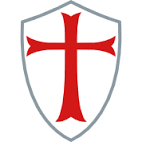
This shield design seems to be supported by at least one contemporary illustration (note the matching shield and banner design):
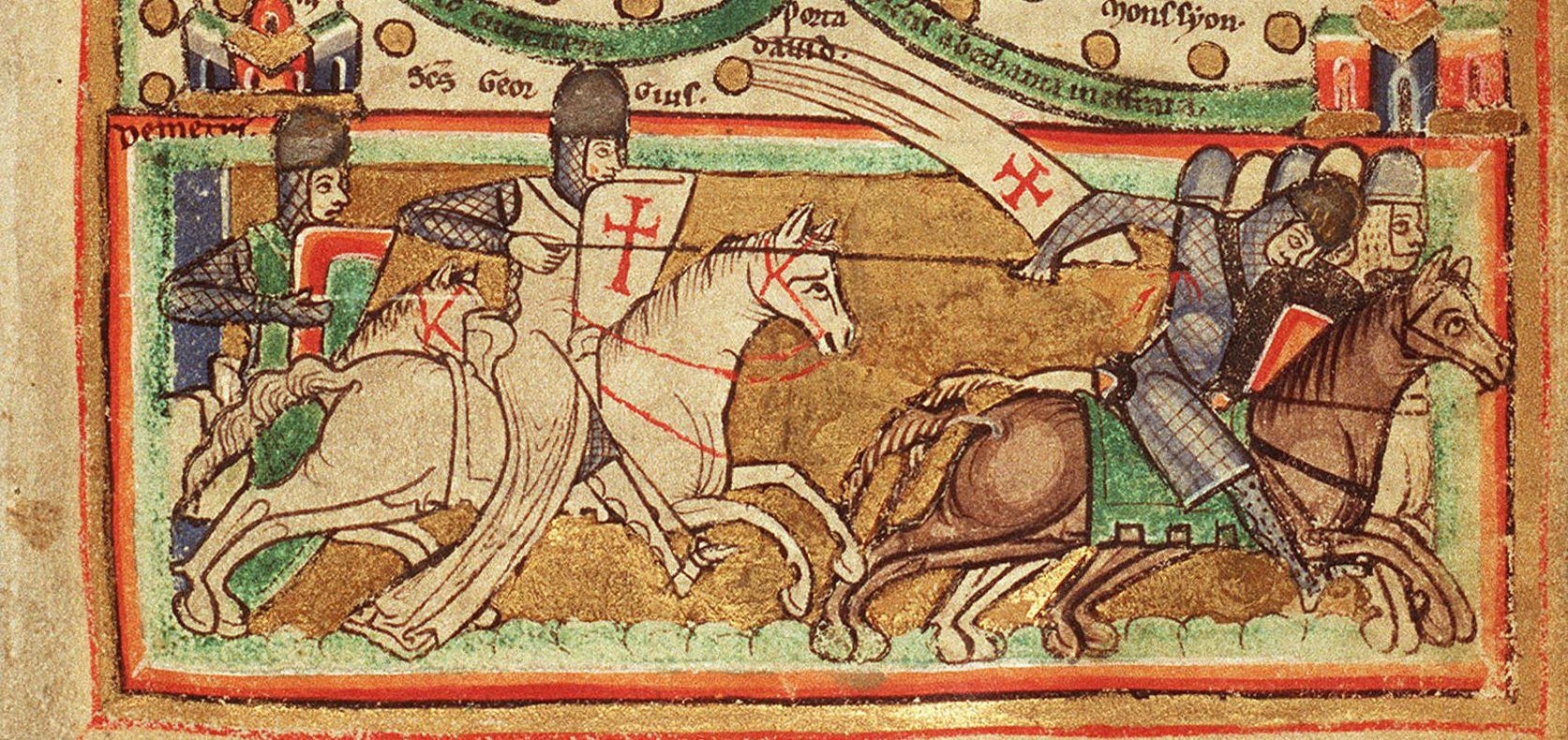
It was also reported to me that (I have not been able to find the actual article online, a link would be welcome) Chris Gravett (who is an historian, writer and senior curator at the Royal Armouries), in Military Orders of the Holy Land, describes 12th century Templar shields as follows: white field with a red cross. The cross is sometimes central, sometimes located in the top left corner. It is also sometimes depicted with splayed ends to the arms. This matches the above commonly depicted Templar shields.
Another illustration that would appear to be from highly reliable source (an actual Templar chapel in a Commandery) shows a completely different design with a cross (the colour of the cross is not obvious, the fresco now appearing to contain very few different pigments beside black):
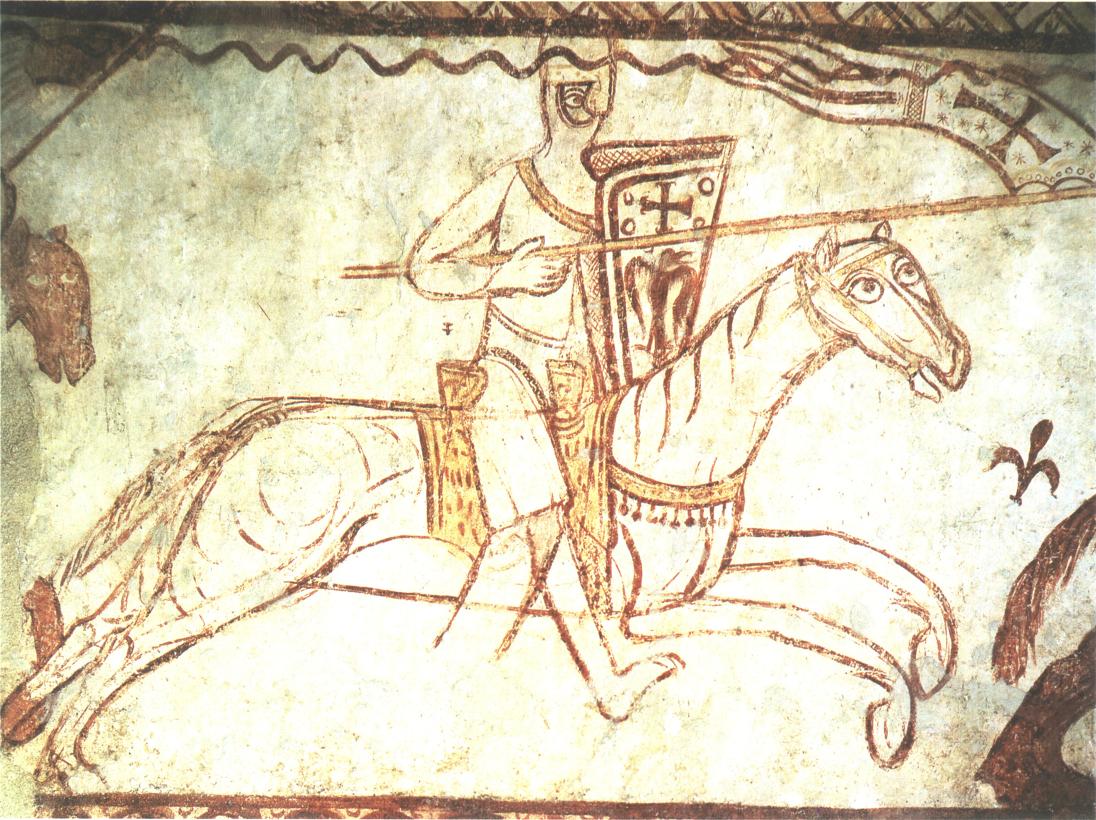
There are a few medieval illustrations from Matthew Paris, a Benedictine monk that give indication of another design for shields and pennons:
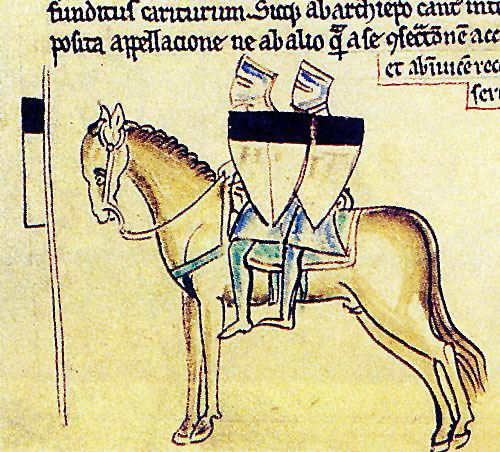
This illustration suggests that the shield of a Templar was argent (white) field with a sable (black) band (called chief in heraldry) at the top and that the Templar pennon matched the shield design. The French canon regular Jacques de Vitry describes in his Historia Hierosolymitana dated circa 1220 how the black over white flag signified "that they are fair and kindly towards their friends, but black and terrible to their enemies". It should be noted that it is accepted that heraldry at that period was not prone to symbolism and therefore that this interpretation may be wrong.
Another illustration from the same author also shows a black and white banner:
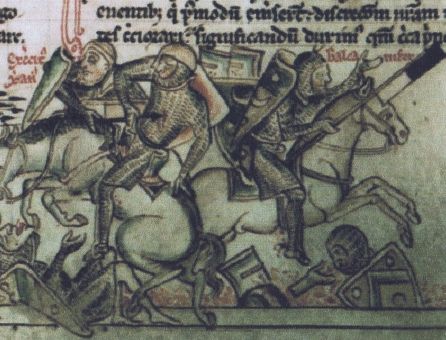
Interestingly, although the banner here matches the black and white design, the shield does not seem to match any "known" Templar design. This may suggest that banner and shield design were not necessarily the same. Again from the same author and in a short period of time, the black and white banner appear twice more:
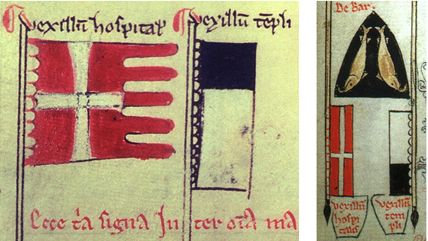
There is also a fresco found at San Bevignate, Italy in a church commissioned by the knights Templar that shows a variation on the black and white design (white band above the black field), built (and painted?) around 1250:
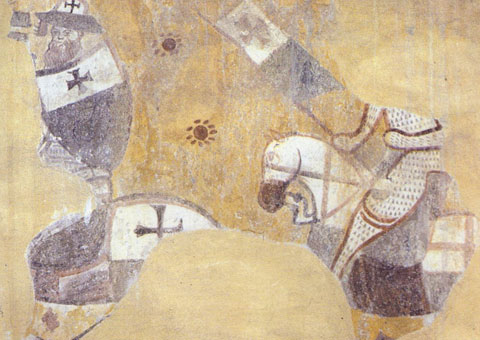
It must be noted here that the church was bought by the Hospitallers after the dissolution of the Templar order and that the design here is also reminiscent of that of the Hospitallers (white cross over black field). It is not clear if that fresco was actually commissioned by the Templars or the Hospitallers, or even retouched by the latter after they bought the church (it is well established that the Hospitallers and Templars were sworn enemies and it would be logical for them to remove traces of the Templars in that church after taking control of it instead of being reminded of them at every mass). The design of the pennon does not match that of the Hospitaller order though so it can be assumed that it was not changed by the Hospitallers and is therefore actually a Templar design.
Written sources describe the banners: Eight thirteenth-century rolls of arms in French and Anglo-Norman Blazon
of the late 13th century, where the banner is described as:
"Le baucent del Temple, d’argent al chef de sable a un croyz de goule passant
that can be translated as:
"The piebald banner of the Temple: argent (white) field with a sable (black) chief (band at the top) and
a gules (red) cross over all".
Cited in
Early Blazon - Heraldic Terminology in the Twelfth and Thirteenth Centuries With Special Reference to Arthurian
Heraldry - Gerard J. Brault
Modern illustrations based on these historical sources include the following:
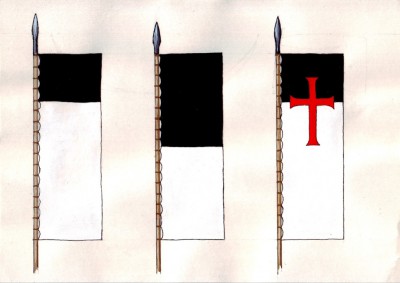
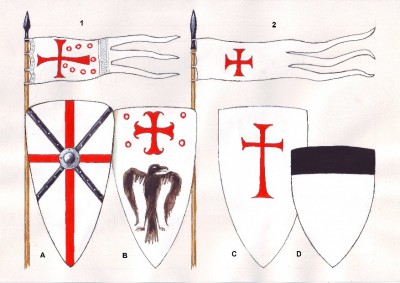
In the above illustration, the sources are:
Pennons:
- 1 is from the Templar frescoes at Cressac-sur-Charente, France depicted above. On that fresco, the pennon is associated with shield labeled B. Note: The cross on that pennon only look correct (the right way up) when the pennon is vertical i.e. when the lance is horizontal, as would happen in a cavalry charge for example.
- 2 is from the map of Jerusalem of about 1200 (also depicted above) and is associated with shield C.
Shields:
- A is taken from the second seal of the Templars, dating to 1158. The diagonal bands seen on the seal are generally thought to represent iron straps, as depicted here rather than heraldic charges.
- B is from the Cressac frescoes (note: colours are conjectural as can be seen on the fresco above).
- C is from the 1200 Map of Jerusalem.
- D is from the Chronica Majora by Matthew Paris, 1240 - 1250.
In summary, we are left with only four contemporary "authors" who left us four contradictory depictions: the two authors of the frescoes, the author of the Map of Jerusalem and Matthew Paris. A few more thoughts on these sources:
- Matthew Paris: English Benedictine
monk, who was working on various books from 1236 to his death in 1259. He was a chronicler, artist,
historian and recorder of genuine heraldry. Even if he was not know to have first-hand account of or to be familiar
with Templar equipment, he is generally regarded as reliable.
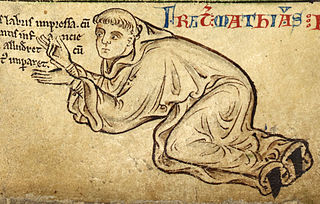
Self-portrait of Matthew Paris, Historia Anglorum (London, British Library, MS Royal 14.C.VII, folio 6r). - The author of the frescoes are not known and therefore cannot be asserted to be reliable. However the frescoes are from known Templar sites of importance at Cressac-Saint-Genis, France and San Bevignate, Italy. It is possible that the authors were commissioned by Templars (both frescoes dated from before the dissolution of the order) or even were themselves Templars and therefore actually had reliable first hand sources at their disposal.
Moreover for my project, I must take into consideration the following, quoting Brother Ranulf:
...
It is likely that, just as in the case of the flag, Templar shields could vary in their design - certainly the shape changed over time and I suspect that the design did too. Senior people in the Order might choose their own shield design and it is possible that the rank and file did the same. Uniformity was an unknown concept, beyond what is set out in the Templar Rule.
....
The baucent (piebald, meaning black and white) banner definitely did not have to be the same as the design on the shield - compare the Hospitaller's 1260 banner of red with a white cross, while shields of that time seem to have been black."
Conclusions
For my shield (and for any banner that is not yet planned), I have decided to use the simple white field with a black bands at the top. Picture of Templar re-enactors that I collected on Pinterest also show variation around my chosen design (see a selection below). It is not clear how much research them themselves performed to decide on a design. As they do show some sort of consistency, they may be used as validation for my design as being the most commonly used historically.
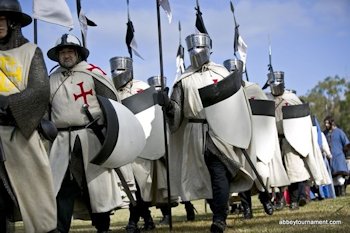
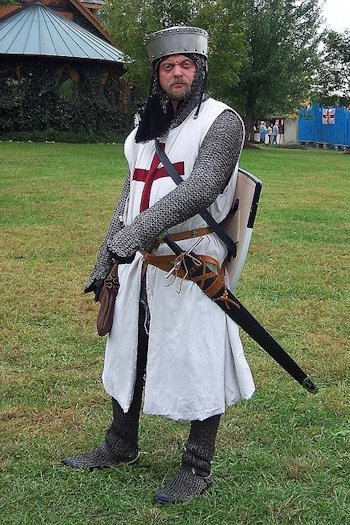
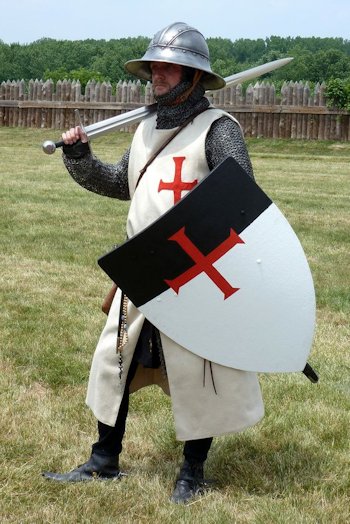
A collection of relevant sources on Pinterest can be found here. The pictures in this Pinterest folder include re-enactors, documentation and historical sources. They will serve as a basis for further research to try and reach a high level of historical accuracy.
Books
-
Armorial des Maîtres de l'Ordre du Temple - Bernard Marillier
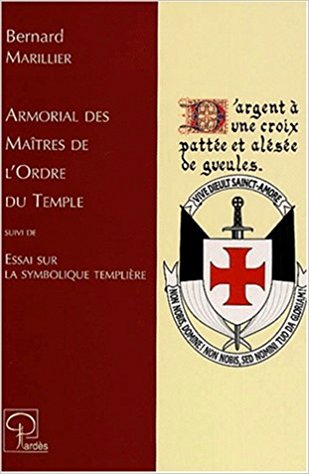
-
Règle et Statuts de l'Ordre du Temple - Laurent Dailliez
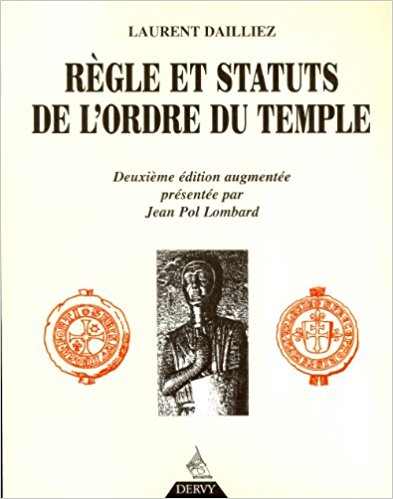
-
Knight Templar 1120-1312 (Warrior) - Helen Nicholson
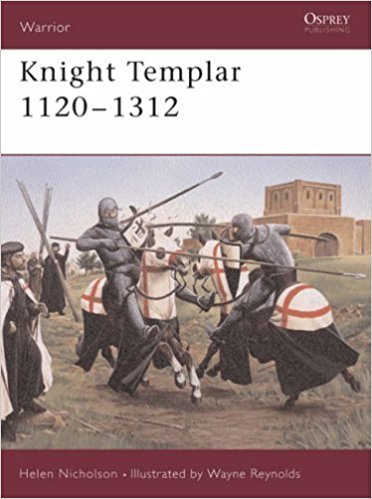
-
Templars, Hospitallers and Teutonic Knights: Images of the Military Orders, 1128-1291 - Helen Nicholson.
This book is out of print and I could not consult it. It can be found second-hand but is expensive (above £100).
An interesting article by Timothy Dawson about re-enacting Templars can be found here.
